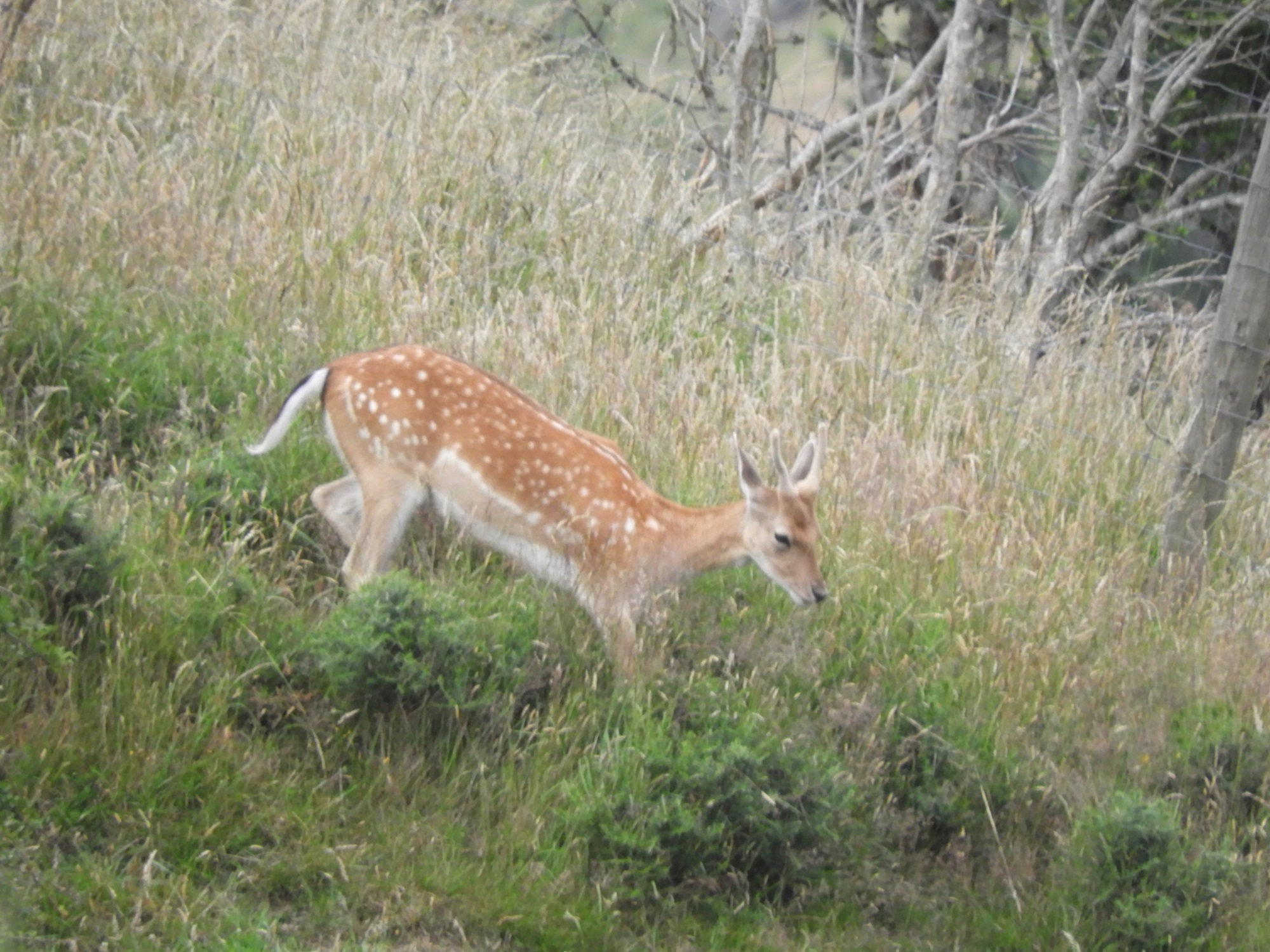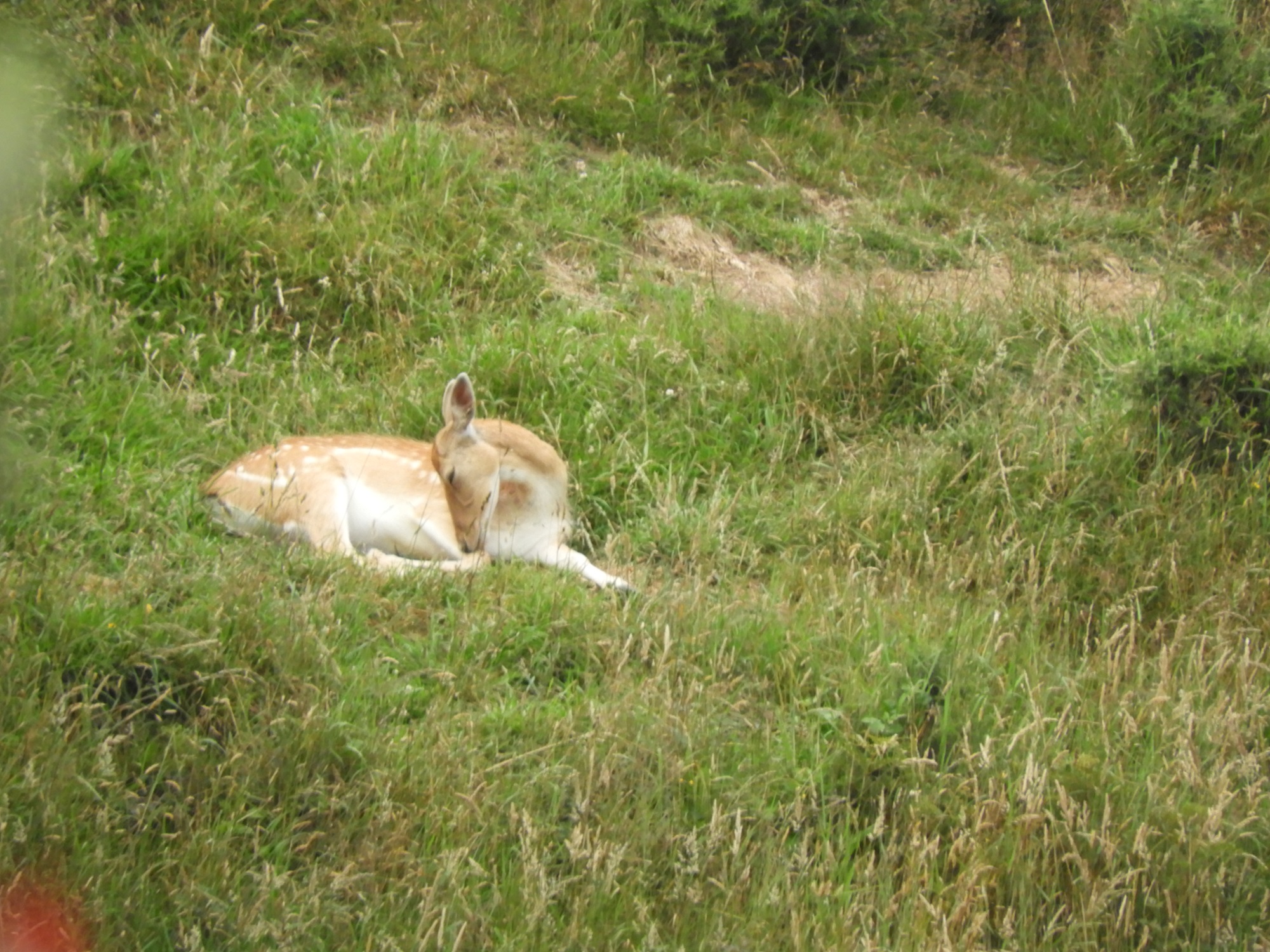I've just been given access to a small farm that has a problem with deer (red and fallow) and goats. They want any goats I shoot for dog tucker, but I get to keep venison.
I'm aware I may have to wait until March to bag a hind given the time of year, but the farmer's preferences means my options for deer are fauns and yearling hinds/does. I don't think I'll get the chance to shoot a faun and it's mother.
Is there a way to reliably identify a yearling hind? As a beginner hunter I've never had the opportunity to observe deer in the wild (tally:1×goat).
These are farm feeding, bush sleeping deer so I imagine the abundance of feed means they'll be in good condition.
Identify your target beyond all doubt because you never miss (right?) and I'll be missed.
Welcome guest, is this your first visit? Create Account now to join.
Welcome to the NZ Hunting and Shooting Forums.
Search Forums
User Tag List
+ Reply to Thread
Results 1 to 15 of 18
Thread: Identifying yearling hinds
-
03-01-2024, 09:26 AM #1Member

- Join Date
- Sep 2022
- Location
- Carterton
- Posts
- 456
Identifying yearling hinds
-
-
03-01-2024, 09:52 AM #2Member

- Join Date
- Aug 2014
- Location
- South Wairarapa
- Posts
- 62
If the deer are a problem and they want them gone or reduced then I would shoot whatever stands in front of you. If you can shoot the hind and fawn then great otherwise I wouldn't lose sleep over it if you only get the hind. The NZ hunting and shooting court of public opinion might disagree. If you don't or can't get the numbers down then you might find that they might get someone else in to do it instead of you.
Sent from my SM-S901E using Tapatalk
-
03-01-2024, 10:18 AM #3Member

- Join Date
- May 2021
- Location
- Mangakino
- Posts
- 462
I opened this thread because I too am curious as to how to identify a hind that can be harvested ethically. A fawn starving to death over an extended period of time is unacceptable to me, not to mention the general non hunting, do-gooding, vocal wokesters out there who would climb all over the idea. The farm has a problem with deer which has developed over some time so a little patience could be exercised till the fawns are old enough to look after themselves if the mother is shot. In the meantime spikers etc could be the main focus. I am pretty sure that you could shoot more quickly than they can breed so eventually the numbers will come down and you will be able to regularly fill your own, and other's freezers. I don't want to hijack the thread so I look forward to being educated in how to identify yearling hinds. Pics would help a lot.
If you have a garden and a library, you have all you need. Oh, and a dog, and a rifle
-
03-01-2024, 10:23 AM #4Member

- Join Date
- Mar 2012
- Location
- Hastings
- Posts
- 2,368
Have culled a few stunted fawns which were taken off their mothers milk early in life when mother has been killed. Fully grown they are about the size of a large hare.
-
03-01-2024, 10:34 AM #5Member

- Join Date
- Aug 2016
- Location
- Gisborne Rural
- Posts
- 3,272
Easier if they have a older hind near them then you just go on size. male yearlings a lot easier they will have couple of bumps or inch off velvet so you can compare a yearling hind next to them. Or if they are next to a fence etc
Its still hard and sometimes you will get it wrong and shoot a two year old with a fawn
This is all good for open country when you can sit there and access for a while
Shooting males won't reduce your numbers
-
03-01-2024, 10:35 AM #6Member

- Join Date
- Aug 2014
- Location
- South Wairarapa
- Posts
- 62
To answer your question about identifying the difference between a hind of breeding age and a yearling. The biggest difference is size they will be smaller than an average sized hind in the area. They look softer than a mature hind especially in the face and their temperament is a lot more naive than a mature animal especially if they are on their own.
Sent from my SM-S901E using Tapatalk
-
03-01-2024, 10:41 AM #7Member

- Join Date
- Oct 2021
- Location
- Auckland
- Posts
- 64
Hinds with young act quite a bit differently.
They will generally be alone, and won’t go far from fawn.
Yearling hinds and spikers will generally be in groups and be pretty dumb.
Spoke to a person the other day who shot one after 2 of them walked right up to the hut.
Just sit and observe your game and you should get a pretty good idea of what they are.
-
03-01-2024, 10:59 AM #8
yearling hinds will shed their winter hair earlier in comparison and will therefore appear earlier red in colour.
-
03-01-2024, 12:30 PM #9
This
Spend enough time watching them, get to no what your hunting there plenty of clues theres a fawn about.
Most of the hinds and fawns around here are grouped up at the moment, but you still see solo hinds with fawns about.
It's a great time to shoot young spikers as they are all kicked out on there own.
Sent from my SM-S916B using Tapatalk
-
03-01-2024, 01:01 PM #10Member

- Join Date
- Jun 2021
- Location
- Hastings
- Posts
- 134
The best way is for you to find an "experienced" mentor to take you under his wing

Stand by for the rush
-
03-01-2024, 01:09 PM #11Member

- Join Date
- Feb 2016
- Location
- Marlborough
- Posts
- 835
What Brad said, but….Watch a hind long enough they’ll give you a clue where their fawn might be, up to you what you do with this knowledge. From a culling perspective it’s often a case of ‘shoot first, ask questions later’. You can age an animal a lot easier once it’s on the deck if you want. A lot of landowners just want the ‘grass thieves’ gone. Just don’t waste the meat if you can recover it easily, there’s a lot of needy people out there that appreciate free meat.
-
03-01-2024, 01:17 PM #12
if you see hind with fawn at foot..you can always shoot fawn first and try to get hind before she reaches cover..... fawns are light to carry and taste great.
lack of headgear is dead giveaway....
good pair of say 10x50 binoculars will be your best friend...if your flush with $$$$ a thermal etc will make life even easier but the binos and sit and observe will teach you more than we could ever type.75/15/10 black powder matters
-
03-01-2024, 07:19 PM #13
Thats the right approach in my book. Lay into the hinds and does april to late october. This time of the year they will stash the fawns for hrs at a time sometimes some distance away if there's no perceived threat. Often only going to pick them up for feeding. Iv seen them bolt and leave the fawn hidden.
Yearlings are smaller in body generally lighter in the front end , more so in the head . The distance from the ear to the eye is similar to the eye to nose in a young deer. A mature hind or doe will have a longer nose. I find reds more obvious than fallow but youll see the difference.
Yearling

Mature Doe
 "You'll never find a rainbow if you're looking down" Charlie Chaplin
"You'll never find a rainbow if you're looking down" Charlie Chaplin
-
05-01-2024, 06:21 PM #14Member

- Join Date
- Sep 2022
- Location
- Carterton
- Posts
- 456
Thks everyone. In the end it was academic because I didn't see a single deer over 4 hunts. Lots of goats though, final tally 2 nannies and 3 billies.
Next time though I'll be more prepared.
Identify your target beyond all doubt because you never miss (right?) and I'll be missed.
-
05-01-2024, 10:37 PM #15Member

- Join Date
- Sep 2013
- Location
- Wairarapa
- Posts
- 844
That will still have benefits for hunting ability and confidence. Just keep going out there and shooting stuff, you will probably already have noticed an an increased familiarity with the process. That will continue. As you have already said, next time, you will be more prepared.
Also with the hinds, perhaps consider it as a good excuse to just observe them for a month or two, there isn’t as much opportunity for that in the Tararua range, so make the most of being able to practice stalking and getting to understand how alert they are and just generally get your eyes accustomed to seeing them.
As long as you keep shooting stags and goats on the regular, the locals should be happy in the meantime. March is less than eight weeks away.
Similar Threads
-
Lots of hinds around, someone should shoot them.
By camenzie in forum HuntingReplies: 30Last Post: 23-11-2023, 08:59 PM -
do you shoot hinds???
By Micky Duck in forum HuntingReplies: 91Last Post: 16-09-2021, 03:27 PM -
yearling spiker and first for the 2020 year
By Larskramer in forum HuntingReplies: 2Last Post: 22-05-2020, 10:42 PM -
Shooting red hinds
By Puffin in forum HuntingReplies: 15Last Post: 12-02-2016, 06:16 PM -
Handy yearling for bartering
By oneshot in forum The MagazineReplies: 14Last Post: 28-11-2014, 08:03 PM
Tags for this Thread
Welcome to NZ Hunting and Shooting Forums! We see you're new here, or arn't logged in. Create an account, and Login for full access including our FREE BUY and SELL section Register NOW!!





 56Likes
56Likes LinkBack URL
LinkBack URL About LinkBacks
About LinkBacks



 Reply With Quote
Reply With Quote



Bookmarks